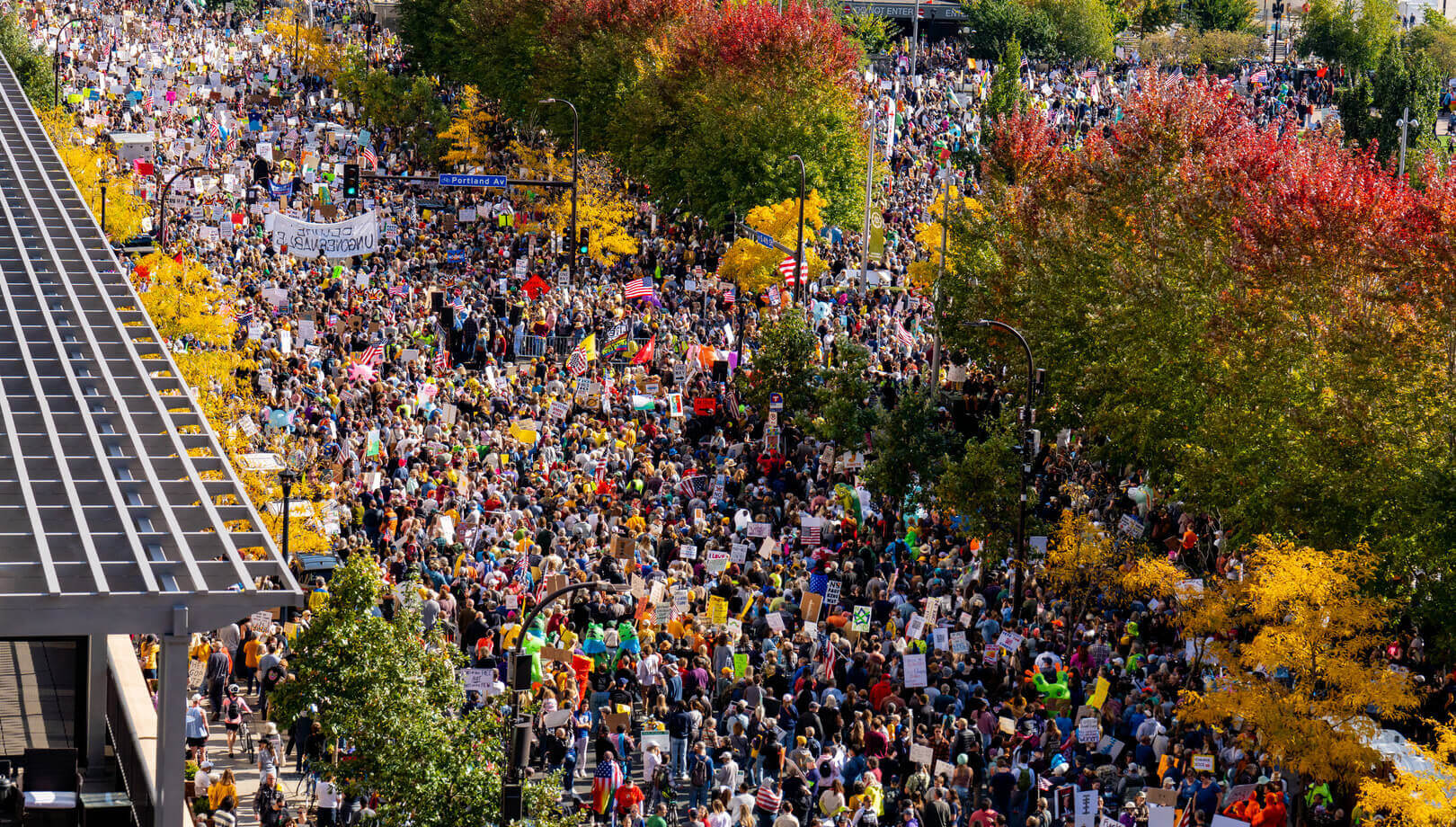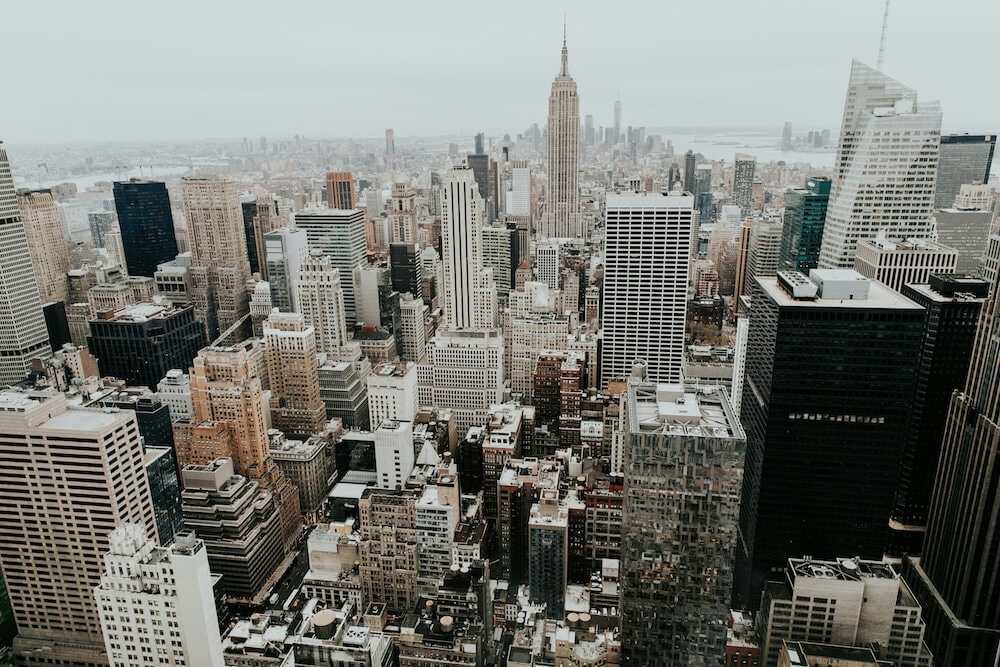Editor’s Note: This is the sixth piece in a series in collaboration with the SDSN-Y exploring the Sustainable Development Goals. See the introduction to the series here.
Many have come to believe that gender equality is a feminist issue, as if to say the fight for equality is a woman’s fight. That’s just not the case.
Gender equality is about poverty, and violence, and education, and democracy. Gender equality is when all people, man and woman, are given equal treatment and opportunity to live a healthy and fulfilling life. It is not just about wage gaps or voting rights. It’s about safety and protection from violence. It’s about the ability to obtain a quality education. It’s about access to fair working conditions. It’s about empowerment and acceptance in any society. It’s about ownership of one’s own body. It’s about the freedom to make decisions and the power of choice.
It’s about the right to live.
This is a human rights issue. Gender equality is our collective fight, man and woman, to give every person the opportunity to live a life free of discrimination, prohibition, or abuse based on gender.
Now, this is not an article on feminism, it’s actually an article on the United Nation’s 5th Sustainable Development Goal, which is to achieve gender equality and empower all women and girls. The goal is to end all forms of discrimination against girls and women everywhere, by providing them with “equal access to education, health care, decent work, and representation in political and economic decision-making processes.” In doing so, we will fuel sustainable economies that will benefit society and humanity as a whole.
Last year, Canada’s newly elected Prime Minister, Justin Trudeau, caused a bit of a stir when he announced that he was going to have a completely gender balanced cabinet with 15 men and 15 women. When asked about why he made that decision, he responded matter-of-factly, “because it’s 2015.”
Photo Credit: World Economic Forum
Again, this is not an article about feminism, but it has some serious feminist undertones, so we might as well get them out of the way. Despite centuries of protest and progression, women still face systemic structural oppression, patriarchy, and horrific violence just by being born female. This level of discrimination and inequality is unjust, and we’re way overdue for a change. The term “feminist” may have negative connotations, but it’s important to understand how we got to where we are today.
The first feminist wave began in the 1800’s with the woman’s suffrage movement, which took over 50 years for women in Western nations to even gain the right to vote. Virginia Woolf, prolific writer and leader in feminist thought, reflected upon her experience living in patriarchal England in her essay “A Room of One’s Own.”
Imaginatively she is of the highest importance; practically she is completely insignificant. She pervades poetry from cover to cover; she is all but absent from history. She dominates the lives of kings and conquerors in fiction; in fact she was the slave of any boy whose parents forced a ring upon her finger. Some of the most inspired words, some of the most profound thoughts in literature fall from her lips; in real life she could hardly read, could scarcely spell, and was the property of her husband.
― Virginia Woolf, A Room of One’s Own, 1929
As Virginia Woolf pointedly notes, women have been the invisible property of their husbands all throughout history. In her time, a patriarchal society was one that “promotes male privilege, by being male dominated, male identified, and male centered. It is also organized around an obsession with control and involves as one of its key aspects, the oppression of women,” according to Allan G. Johnson in his book Gender Knot : Unraveling Our Patriarchal Legacy. Today, patriarchy still exists, establishing systems of power relations where men exert dominance over women, thus hampering women’s freedoms, and violating their inherent right to be treated as equal. Some societies grapple with a pervasive type of patriarchy that bleeds into the systemic oppression of women, while other societies fight a subdued type of sexism which is just as consequential.
In the 1960’s the second feminist wave came around, advocating for reproductive freedoms and the elimination of structural inequalities, both at work and at home. Another feminist movement erupted in the early 2000’s, giving voice for LGBTQ and women of color. Today, women are still vehemently battling the same issues from a century ago, and for goodness sake, it’s 2016.
So what has stalled progress if women have been fighting for equality for over a century? Women make up 51% of the world’s population and 2 billion of the global workforce. They are our mothers, our sisters, our peers. Where are we failing (wo)mankind?
The Power Struggle
According to the World Bank, men outnumber women in global parliaments, with the exception of Rwanda and Bolivia where women are the majority (perhaps Canada will be the next exception as well). But in societies with an imbalance of power in favor of men, social biases and structural oppression become ingrained in the culture of the society. For example, in the United Arab Emirates, women cannot marry without the consent of their male guardians. After being married, they are legally bound to obey their husbands and cannot ask for divorce without a formal court order.By giving back women their right to economic resources, ownership and control over their land and property, financial services, inheritance, and natural resources by right of law, we will be one step closer to gender equality. This is a target of the SDG 5 (5.a).
In Nigeria, women are seen as second class citizens, an “object for prostitution, forced marriage, street hawking.” By eliminating all forms of violence against women and girls in both public and private spheres, we can put an end to human trafficking and sexual exploitation. This is another target of the SDG 5 (5.2). Because no culture is alike and no society operates the same, the 5th Sustainable Development Goal sets a series of specific targets aimed at combating systemic and cultural issues that move us closer to achieving our goal of full gender equality.
In the Photo: Executive Director of the UN Entity for Gender Equality and the Empowerment of Women (UN Women) Phumzile Mlambo-Ngcuka. Photo Credit: UN Women
In societies where patriarchy reign, men are given preferential treatment and have greater access to political and economic power, a desirable trait for families. As a result, sons are preferred over daughters and given a chance at life. In societies like China and India, when pregnant women discover their child will be a girl, they’re more likely to abort the pregnancy thereby killing the unborn child. As a result of China’s infamous “one child per family” law which was enacted in 1978 and ended in 2015, abortion and infanticide of young girls left China with 30 million more men than women. And for the girls that manage to survive through birth, they are often mistreated or neglected access to proper healthcare and education since they are not seen as worth the investment. Then when the men become elevated to positions of power, the cycle continues.
Related articles: “SDG 13: TAKING CLIMATE ACTION”
“SDG 15: PLANTING NEW ROOTS FOR A FERTILE PLANET”
Proper access to healthcare and education will help empower and elevate women in developed and developing nations alike. Healthcare and education are often interrelated and have significant impact on economic and social progression. The rates of female morbidity decrease when women experience less social discrimination and have greater access to education. The converse is also true. An educated girl is more likely to live longer. She is less likely to be wed against her will, less likely to die during childbirth, and more likely to have and care for a family when she is physically and economically able. Educated women are more likely to find work, and thus given greater access to healthcare.
It seems pretty straight forward. By providing equal access to quality healthcare and education, we would be one step closer to breaking the endless cycle of poverty and violence, not just for women, but for all. Unfortunately, it’s not that simple.
Gender-based Violence
Different cultures practice varying forms of gender-based violence that are understood to be social norms. Patriarchal societies in developing nations often have traditions of accepted forms of violence that translate into gruesome practices that endanger women’s physical and psychological well-being, often resulting in death. This is why another target of SDG 5 is to eliminate all harmful practices, such as child, early and forced marriage and female genital mutilation (5.3).
Women in Africa and the Middle East live in a very particular kind of fear from a common practice known as Female Genital Mutilation (FGM). FGM “refers to all procedures involving partial or total removal of the external female genitalia or other injury to the female genital organs for non-medical reasons.” It can result in grave consequences for women and girls who experience it, including “prolonged bleeding, infection, infertility and even death.” There are various different reasons as to why FGM is carried out, from rite of passage to believed enhancements of sexual pleasure for men.
Photo Credit (left): Forward UK
FGM is an absolute violation of human rights, yet over 125 million women and girls are affected by it to this day. One victim of FGM described her experience:
note: the following may be a trigger to survivors of gender-based violence.
Two women held my legs and hands so tight that I could not move. Still from the background I could hear the women singing and I felt that they were celebrating my pain, but the real reason for the songs was to diffuse the cries so that nobody can hear me crying. Then I felt a very sharp pain between my legs. This was a turning point in my life. The pain I felt can’t be described; thinking of it brings cold shivers inside me.
The victim’s name is Keziah Bianca. She was raised in a community in Africa where clitoridectomy, a form of FGM, is a common practice done to prevent girls from having sexual desires. Clitoidectomy is exactly as it sounds, it is the removal of a girl’s clitoris and is only one of four different types of FGM. The World Health Organization recognizes FGM as a violence of human rights, but that’s not enough. Due to societal constructs, few speak out against FGM, accepting it as status quo.
In the Photo (left): The UN Secretary-General Ban Ki-moon and Jaha Dukureh, Female Mutilation Activist
Like what Keziah experienced, most gender-based violence is aimed at confining women to certain social standards and expectations. In Cameroon, breast ironing is a practice where girls as young as 8 have their chests pounded with hot objects to prevent further development. The practice not only causes excruciating pain, but is usually intended to make girls less attractive to men, in theory, to prevent rape or other forms of sexual harassment, prevent early pregnancies that might stain the family name, or prevent girls from being forced into marriage thereby being able to continue their education. Some lay claim that the practices are preventative measures at the girls’ benefit, which imply that women bring these horrors upon themselves just by being born a female. The double edged sword is that the preventative measure is just as gruesome as the consequence it is preventing.
The harsh reality is that we live in a world that sees women as less human than men, and it’s important to remember that patriarchy is only a type of system by which society builds upon, not the actual man itself. It is the collective participation and tacit compliance that these inequalities are cultural norms which allow them to persist throughout time. And although men are, in fact, the agents that dominate society and women, patriarchy should not be understood as a relentless man’s endeavor to homogenize. Instead, it should be seen as a learning and internalizing process that begins since the day we are born, and that is constantly being reinforced by social practices and norms, and that conscious and unconsciously influences people’s actions and behaviors.
Do The Math
Gender roles are learned young. We know that at around 2 years old, children begin to identify gender differences in the adults around them– everything from physical attributes of men and women, to abstract characteristics like perceived softness or strong demeanors. Before 3, they begin to show self-awareness in their own gender, as well as internalize gendered expectations that come from toys, tasks, and environments, and when children are exposed to television and media early on in life, they learn gendered schemas that persist and shape the rest of their lived experiences.
In media, young girls learn that they are meant to look pretty, be love interests for the main character, and be saved from evil villains. To simply put it, women are portrayed by media as distractions.

This is despite the fact that in nations where gender parity is achieved, more women graduate than men. Even in the United States where women are now more educated than men, they are paid less, less likely to be selected for leadership roles or political positions, less likely to marry or if they do, they’ll likely marry below their education level. This suggests that cultural norms around gendered expectations are more powerful than education or merit. While not quite patriarchal, the sexism that stems from media’s objectification of women lays a framework of how girls are expected to act, behave, and be seen.
The under-representation of women or strong female characters in media sends the message that women are of less value– a truth most minorities know all too well. The intersectionality of gender and race establishes a crippling bias built upon widely socialized beliefs that individuals within specific social categories are expected to be lesser. An example is the tech startup industry which is notoriously known for over-investing in male entrepreneurs and under-investing in female entrepreneurs. However the conversation around reducing the gender gap in education and the workplace is common in Western Europe and North America, but with women from different backgrounds such as “racialised minorities, older women without qualifications, and women in the poor South of the world,” they are at a greater disadvantage than the professional, white, educated woman. Between 2012-2014, 0.2% of black female startup founders received venture funding. If they did get funded, they averaged $36,000 in comparison to white males who receive an average of $1.3 million. Therefore it’s important to identify and recognize instances in which intersectionality of race and gender contribute to distinct biases and discrimination positioned against women with different backgrounds.
In the Video: “The Day Beyoncé Turned Black“-SNL, February 13th, 2016
One psychological impact of such a discrimination is known as “stereotype threat,” coined by Social Psychologist Claude M. Steele. Stereotype threat occurs when identifiers such as race or gender are made salient to individuals within certain social groups, they become more likely to conform to the stereotypes associated with those groups, further perpetuating the stereotypes that society expects. Women experience stereotype threat when it comes to STEM (science, technology, engineering, and math) fields of study, because they are not expected to excel in math or science related fields. At one point, women used to be very interested in STEM subjects, in fact, it was right around the second feminist wave.
Photo Credit: NPR
Yet, sometime in the 80’s there was a near 40% decline in computer-science graduates, of which there are only 18% today. So what happened?
Around the 80’s was when personal computers started entering consumers’ homes. These devices, much like toys, were marketed almost entirely to men and boys. Thus young girls received the message that science and technology was not for them, it was for the boys. Unconscious biases build into cultural norms and have ripple effects for generations to come. Now, significantly less women choose STEM related fields of study and for those who do, sex-based biases prevent women from being hired compare to their male peers.
This just doesn’t make economic sense. Studies show that a 1% increase in gender diversity will correlate with a 3% increase in revenue. Likewise, a 1% increase in racial diversity will increase a 9% uplift in revenue. If gender equality is realized, there would be $28 trillion added to the global economy, or an increase of 26% to the world’s GDP in less than 10 years. That’s an expensive missed opportunity.
It’s this specific reason that another one of the targets for the 5th Sustainable Development Goal is to enhance the use of enabling technologies, in particular information and communications technology, to promote the empowerment of women.
Being The Catalyst
In the Photo: The Voice of Libyan Women founder Alaa Murabit giving opening remarks at the 59th session of the Commission on the Status of Women (CSW59)
Subverting systems of inequality will not only require changes to policies and regulations, but also a reprogramming of mankind’s heritage of biases that favor one gender over the other. Cultural changes won’t be made overnight and mindsets will take time to shift, but gender equality is no impossible feat. There are a few immediate remedies that can make way for lasting effects.
First, we should openly acknowledge and accept that we live in a world of diverse cultures and societies with their own unique customs and traditions, but there are still fundamental violations of human rights that prevail across developed and developing nations. Whether the patriarchy is systemic or the sexism is unconscious, taking responsibility of the well being of all humans, regardless of race or gender, is essential for achieving gender equality.
After all, you don’t have to be male to be sexist and you don’t have to be female to be feminist.
The next steps would to pave a path for women’s full and effective participation and equal opportunity for leadership at all levels of decision-making in political, economic and public life; a very important target in the 5th SDG. Successful execution will require long-term commitments that are reinforced by renewed processes and social practices. Because at the end of the day, Mitt Romney may have binders full of women, but Justin Trudeau actually achieved a gender balanced cabinet.
 In the Photo: 2012 US Republican Presidential Candidate Mitt Romney responding to a question about how he would resolve the income gap between men and women in the US.
In the Photo: 2012 US Republican Presidential Candidate Mitt Romney responding to a question about how he would resolve the income gap between men and women in the US.
The UN has included Gender Equality as their 5th Sustainable Development Goal to hold countries and nations accountable in a collective effort to eliminate gender based discrimination and elevate women and girls around the world.
Communities must lead by example and when young girls grow up seeing strong female leaders, they want to be more like them. Girls that grow up in communities with visibility to their strong female leaders perform better in school and have great ambitions and aspirations. A village in India allocated one third of their political positions to women, and within the span of two terms, saw equal rates of boys and girls enrolling in classes, as well as graduating, thereby eliminating the gender gap in education. This is is also known as the role-model effect. In this instance, “seeing women in charge persuaded parents and teens that women can run things, and increased their ambitions, changing perceptions and giving hope can have an impact on reality” explains MIT economist Ester Duflo. By structurally opening up opportunities for women leaders, a cycle of female empowerment is initiated, encouraging young girls to grow up believing they are equally as capable, equally as competent, and equally as valued as men.
We Should All Be Feminists
Gender equality won’t be realized by counting percentages in a diversity report or writing rules onto paper. Gender equality will be realized when men and women alike are viewed as equals, recognized by society as equals, and have the same power and freedom to make decisions about the life they lead regardless of what is between their legs.
If we were all a little bit more feminist, perhaps biases, assumptions, and stereotypes would weaken. Madeleine Albright, the United State’s first female Secretary of State, recently made the claim that “There’s a special place in hell for women who don’t help each other.” She upset everyone, feminists and chauvinists alike.
Most were upset by the implication that women who don’t vote for Hillary Clinton for President of the United States, will find a comfy spot in hell to reside. And while her timing was poor, her intentions were pure. There is no doubt, that despite Hillary’s qualifications, she is a woman fighting in a man’s war. She will have to battle sexist stereotypes and sex-based assumptions that her competition will never have to face, and as a result, she will have to try that much harder to prove herself. Madeleine Albright is absolutely right in her claims that women have an obligation to help one another now more than ever. Today, women still face many of the same obstacles and hurdles as they did centuries ago. Only when women support each other, rather than tear each other down, will we find a path toward progress.
My hope is that young women like my two granddaughters — those who have lived in a world where Roe v. Wade is the law of the land, who played school sports thanks to Title IX and who have never had to check “married” or “single” on a job application — will build on the progress we have made. But that will happen only if women help one another. And for those who do that, there will always be a special place of honor.
It may be that the strongest weapon available to ignite a world of equality and empowerment, will be the support young girls get from their women leaders, mentors, and role models. Together, today’s feminists are fighting the battles so that our future generations won’t ever have to live the war. Okay, maybe this was an article about feminism.
So really, we should all just be Emma Watson, I mean feminists.
_ _
Cover Photo: Elena de Paz , a survivor of domestic armed conflict. Read more of her story here. Credit: UNDP in Guatemala.
This article is part of our series in collaboration with the Sustainable Development Solutions Network Youth Division on the Sustainable Development Goals (SDGs) – #SDGStories. Follow the stories with #SDGStories and look for the next installment to our weekly series to learn more about achieving the SDGs across the globe. We can achieve them, and we must.




















